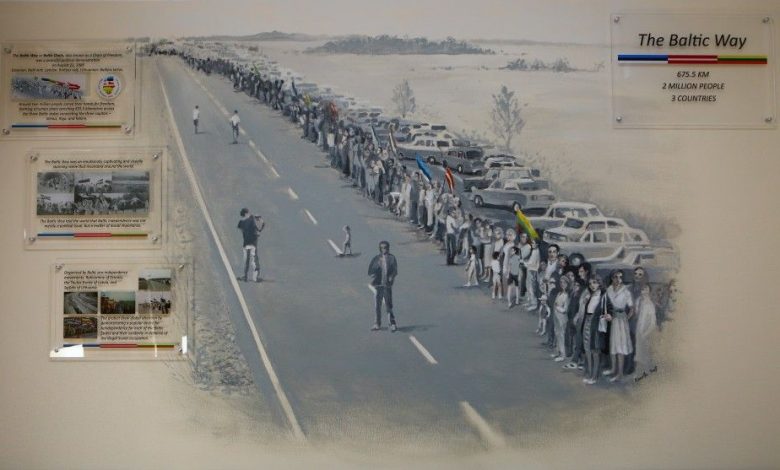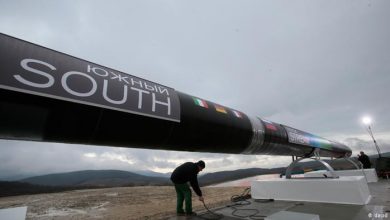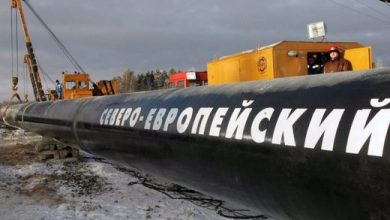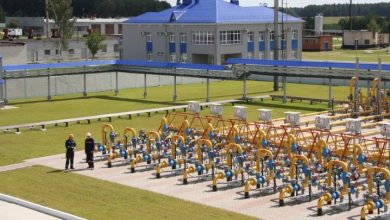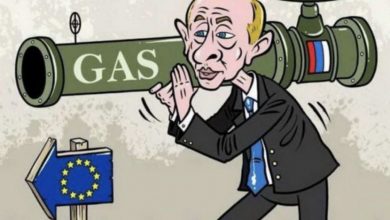Baltic countries – competitors or partners?
The theme stated in the title is senseless at first glance – of course, partners and, of course, competitors. Having ceased to be “Baltic sister republics,” as they used to be called in Soviet times, Lithuania, Latvia, and Estonia are developing their own path, but toward the same goals, and therefore the paths are similar, although the conditions are different.
The economic relations between Latvia and Russia after the border treaty was signed between them sharply went uphill, while Estonia, on the contrary, after the April events, Russian transit declined sharply.
All three countries joined the European Union and NATO at the same time, but already on the threshold of joining the euro zone, Lithuania took the lead, until the requirements of the Maastricht agreements were met last year, it did not have enough of a percentage percent – however, it still didn’t bring the euro into circulation allowed. But all experts emphasize that, developing at a slightly slower pace than Latvia and Estonia, Lithuania did not subject itself to a sharp cooling of the economy, as is happening now with its neighbors. But it is Lithuania that holds in its hands the key to solving the problem of energy supply to the Baltic countries in the coming decades – can it fundamentally solve the issue of building a new nuclear power plant in Ignalina and sign the corresponding agreement with the participating countries of the project?
By the way, the recent visit to Estonia by the Latvian Prime Minister Godmanis gave rise to reporters to talk about the same topic: the economic relations between Latvia and Russia after the border treaty was signed between them sharply went uphill, and Estonia, on the contrary, after the April events Russian transit has fallen sharply. And it seems that the mayor of Ventspils is so grateful to our Prime Minister Ansip for this that he is ready to erect a monument to him in his busy port. Our prime minister modestly refused the monument, and reiterated that Russian transit to Estonia did not and does not do the weather, and it did not decrease so sharply. A 40% reduction in traffic on the Estonian Railway in 2007 was a trifle for our Prime Minister, not worthy of any serious attention. An increase of 37.1% in the Latvian railway traffic during the same period is the subject of the most serious attention for the Latvian government and the basis for serious decisions on major investments in the development of the existing railway infrastructure.
One thing is clear – the sooner our government returns to sinful land and develops a clear plan for overcoming the economic downturn, the more Estonia’s neighbors and partners will reckon with it.
If we leave aside the political component, then it would not be bad to figure it out, all the same partners or competitors of the Baltic republics, at least with respect to the economic? This issue has recently become especially acute if one looks at least at the unsuccessful attempts to solve the construction of a new Ignalina Nuclear Power Plant “on shares” or the transition of many transit flows from Estonia to Latvia. This will be the subject of a round-table discussion in Riga organized by the Baltic International Academy and the Baltic Course magazine. At the request of the Business Environment, his point of view on these complex relationships is expressed by expert in the field of transport and transit Raivo VARE.
In addition to the obvious areas of economy and transit, the Baltic countries compete, although much more weakly, in the industrial sector, mainly in woodworking and food production. This is an existing one. And they can potentially compete in all other areas.
Energy curve
The most paradoxical situation has developed in the energy sector – if in all other areas we are competing, so to speak, outright, then in the energy sector we are completely tied together. Neither in each individual energy market, nor in the common Baltic, in any of our countries is it possible to resolve this issue only on their own, focusing only on their own strengths. One way or another, we will have to cooperate. It is already clear that Lithuania is not able, unfortunately, to specifically solve the problem of building a new nuclear power plant, which worries its neighbors, and it is also clear that the old Ignalina cannot be closed at the appointed time – this would mean an energy disaster for our entire region and the problem even for Estonia, which has its own shale power plants that provide for the country’s domestic needs, because the Baltic countries have almost one single power grid. It would be especially difficult for Latvia, which produces electricity on gas and on water energy, that is, on the most unreliable sources of energy (depending on the price of gas and on weather-dependent water flow), and forced to import 50% of the energy balance. By the way, for some reason no one remembers what Poland produces electricity on, and it produces it from coal, that is, carbon-saturated minerals of the same class as shale. So our region is very interconnected and interdependent.
Today, the question for Estonia is this: we need sufficient access to various energy markets: these are Lithuanian-Polish, Latvian-Swedish and Estonian-Finnish links. By the way, President Ilves recently said this – in the energy sector, we need to make a choice. Circumstances dictate – according to the EU directive, Estonia will have to purchase greenhouse gas emission quotas, so our shale electricity becomes very expensive in a flash, which reduces the competitiveness of our entire economy. To build an endless series of windmills for purely technical reasons is not an option for energy balance. It’s also dangerous to bet on gas today, because it is unclear how Russian gas capacities will be able to satisfy growing European needs and at what prices, not to mention the political component of the issue. But Estonia, while this choice has not been made, looks in different directions: we will participate in shared construction in both Ignalina and Finland – they plan to build two new nuclear power plants there, we can buy there. Literally in recent days, the press reported that Estonia may have to build its own nuclear power station, but our people are not ready for this idea yet … And there may be a situation when we also have to buy electricity, but where? It is completely unknown whether Russia will have something to sell in 2015-17, because already today it is in its northwestern region that a shortage of energy resources is beginning to be outlined.
From the point of view of efficiency and safety, nuclear power plants today are the best way out, and France is an example of this. And the Baltic countries should seek a joint solution – because ideally, of course, it is possible to build nuclear power plants in each country, but this is hardly rational. Today, Lithuania’s inability to make a decision on Ignalina is a knife in the back of all the Baltic countries, including Lithuania itself, because if this continues for some time, then the neighbors will be forced to leave this project, and then the planned Lithuanian nuclear power plant the guaranteed sales market will disappear, and disputes over the project implementation scheme will move to a completely different plane.
Transit sector
It is here that the fiercest rivalry exists – transit as a logistics market is competitive in nature. Corridors of goods flows passing through different countries have always been and will be the objects of fierce competition. Baltic transit is mainly associated with Russian goods flows. After the April events in Estonia, part of the Russian cargo went to the ports of Latvia, Finland and especially Russia. Estonia has retained, mainly, only the volume of fuel oil transportation. Recently, a Chinese emphasis has appeared in the transit policy of Latvia and Estonia – both countries are interested in building large container terminals on the territory of their ports and creating logistics centers for Chinese goods addressed both to Russia and the West. Estonia has entered into a letter of intent with the second largest Chinese and fourth in the world Ningbo port. Latvia also has projects related to the Chinese direction.
Estonian ports have their advantages here. They are deep-sea and can accept large tonnage vessels, up to large ocean container ships. In addition, they have significant free territory on which it is possible to deploy the so-called port type hub (hub), which in the logistic terminology indicates a phenomenon an order of magnitude higher than just a freight terminal. Through the hub you can work not only according to the sea-land scheme, but also sea-sea and land-land, several different businesses converge here. Thus, the importance of such a cluster around a hub for the local economy is much greater than a simple transshipment terminal. The logic here is as follows: in the North Sea there are hub ports where the bulk of the goods from the “world factory”, which produces 40% of all world exports, is supplied by large ocean vessels. These are, first of all, Rotterdam, Hamburg and Bremenhaven. The new large Sino-oriented container terminal in Estonia could also work according to the configuration of the hub, and from here to St. Petersburg not only the land but also the sea shoulder is much shorter than from the current hubs of the North Sea. Therefore, relatively smaller, so-called feeder (delivery) vessels will be able to significantly increase the number of flights between the hub and the port of destination in Russia, in the Petersburg region, limited in depth – from four days from Rotterdam versus one day from Tallinn.
Container shipping today is the fastest growing segment in the world, and there is enough container volume for everyone. In conditions of normal development and participation in the international division of labor, Russia itself, as well as the CIS countries, will grow by leaps and bounds as a consumer and producer of container flows. Today, in the Russian direction, the percentage of container traffic is 70%, and from Russia – only 12%. The level of 90% is considered normal in the world, and it is clear that here the situation will change at a gigantic pace.
Container technologies are developing rapidly today, in Rotterdam we were able to get acquainted with the technology of tomorrow, which the Chinese have already installed in their new port, which is built at sea.
So in the Baltic countries there is an interesting prospect in the field of container transit, another thing is how these opportunities will be used, how quickly plans can be implemented and concrete goods flows established. Of course, a negative, ill-conceived, offhand assessment of the plans for the construction of a new Estonian container terminal does not help them, and we need to prepare a well-thought-out, but quick and not emotionally simplified decision on the necessary immediate start of the relevant preparatory work.
This post is also available in:
 English
English  Русский (Russian)
Русский (Russian)

